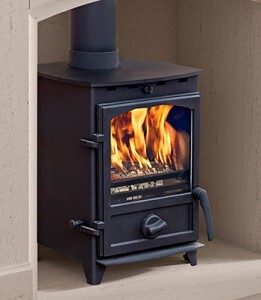Getting the best from your wood burner
A modern wood burner is virtually carbon neutral when using current burn technology. High-quality wood emits less CO2 when burned than it does with natural decay, so with correctly installed stoves producing emissions of only 0.008 kg CO2 per kWh – compared to 0.198kg for gas, and 0.517kg for electricity – wood provides an attractive alternative to gas and electricity for heating the home.
Design and technology has moved forward dramatically over the past ten years, with the introduction of controlled secondary and tertiary combustion and improved baffle arrangements.
A wood burning stove should be given serious consideration when selecting a heating method for your home.
Essentials
- Check the chimney
The chimney may need to be lined before the wood burner can be installed. Homes dating from the mid-1960s onwards should have had a concrete or clay chimney liner fitted when they were built, but get a qualified installer to check out the chimney, whatever the age of your home. There are lots of benefits to having a chimney lined, including better energy efficiency.
- Get a registered installer
The installation of a wood burner must comply with building regulations and the easiest way to do this is to use a qualified fitter. HETAS-registered installers deal with wood, solid-fuel and biomass domestic heating appliances and can self-certify that their work complies with building regulations, so it’s safe and legal.
Can we help?
If you would like to know more, please make contact and one of our qualified fitters will be happy to assist.
http://kent-stoves.com/contact-stove-specialists/




